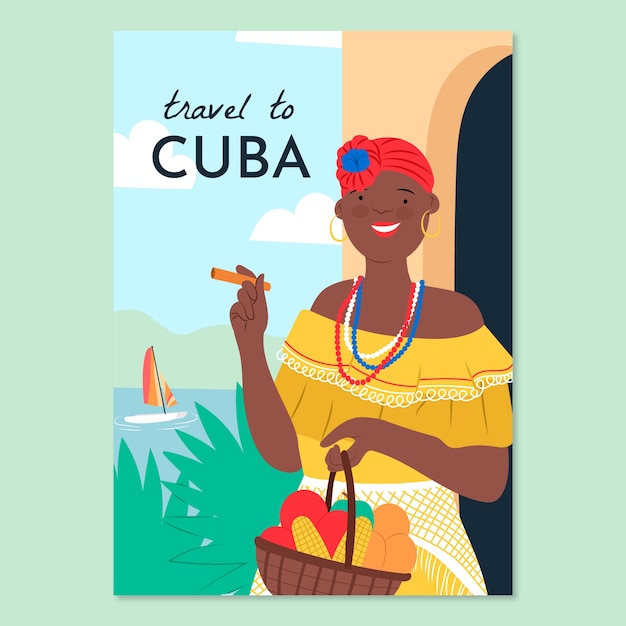Discovering Cuba – Fun Facts for Kids

Cuba is the largest island in the Caribbean.
Havana, the capital of Cuba, is known for its colorful buildings and vintage cars.
The national bird of Cuba is the tocororo, which has beautiful blue, red, and white feathers.
Cuba is famous for its delicious cuisine, including dishes like moros y cristianos (rice and black beans) and ropa vieja (shredded beef).
Cuba has a tropical climate, which means it has warm temperatures all year round.
Cuban music, like salsa and mambo, is known for its lively rhythms and catchy tunes.
Cuba has a rich history and is home to many historical sites, such as the Castillo de la Real Fuerza and the Plaza de la Catedral.
The Cuban flag has three blue stripes symbolizing the three parts of the country: West, Center, and East.
Cuba is surrounded by beautiful beaches with crystal-clear waters, perfect for swimming and snorkeling.
Baseball is the most popular sport in Cuba, and many talented players have come from the country.
The Cuban Revolution led by Fidel Castro in 1959 brought about significant changes in the country.
Cuba is known for its high-quality cigars, which are made from tobacco grown in the country.
Ernest Hemingway, the famous American writer, lived in Cuba for many years and wrote some of his most famous works there.
Cuba has a unique art scene, with many vibrant paintings and sculptures on display.
The Bay of Pigs, located in Cuba, is famous for the failed invasion attempt by anti-Castro forces supported by the CIA in 196
Discovering Cuba – Fun Facts for Kids part 2
Cuba has a diverse wildlife, including animals like the Cuban crocodile and the Cuban tree frog.
The Cuban Missile Crisis in 1962 brought the world to the brink of nuclear war.
Cuba has a unique style of dance called Afro-Cuban dance, which combines African rhythms with Cuban traditions.
The famous Cuban poet and writer José Martí is considered a national hero in the country.
Cuba has a strong emphasis on education, with a literacy rate of over 99%.
The Malecón, a long seaside promenade in Havana, is a popular gathering place for locals and tourists alike.
Cuba has a vibrant carnival culture, with parades, music, and dancing taking place throughout the country.
The Cuban peso is the official currency of Cuba.
The Sierra Maestra mountain range in Cuba is the highest in the country and is popular among hikers and nature enthusiasts.
The Cuban healthcare system is known for its quality of care and is often admired internationally.
Cuba has a rich cultural heritage, with influences from Spain, Africa, and indigenous Taíno people.
The Cuban flag has a white star on a red triangle, symbolizing independence and freedom.
Cuba has a strong tradition of storytelling and folktales, with characters like the legendary Guanaroca featuring in many tales.
The Cuban Revolution brought about significant changes in society, including improvements in healthcare and education.
Cuba has a strong sense of community and neighbors often gather in plazas to socialize and play dominoes.
The Cuban Revolution led to the nationalization of industries and businesses, including the sugar industry.
Cuba is known for its stunning architecture, with buildings influenced by Spanish Colonial, Art Deco, and Soviet styles.
The Cuban flag is often associated with the Cuban Revolution and is a powerful symbol of national pride.
Cuba is home to nine UNESCO World Heritage Sites, including Old Havana and the Viñales Valley.
The Cuban education system places a heavy emphasis on the arts, with many schools dedicated to music, dance, and visual arts.
Cuba is known for its rum, with brands like Havana Club being world-renowned.
The Cuban healthcare system provides free medical care to all citizens.
Cuba has a vibrant salsa music scene, and dancing is an important part of the country’s culture.
Baseball is often referred to as the national sport of Cuba, and the country has produced many successful players.
Cuba was a Spanish colony until it gained independence in 1902.
The Cuban Revolution established a socialist government in the country.
Cuba is known for its beautiful colonial architecture, with buildings dating back to the 16th century.
The Cuban peso is used for everyday transactions, while the Cuban convertible peso is used by tourists.
Cuba has a strong literary tradition, with authors like Alejo Carpentier and Dulce María Loynaz receiving international recognition.
Cuba’s healthcare system has produced many advances in medical research, including the development of lung cancer vaccines.

